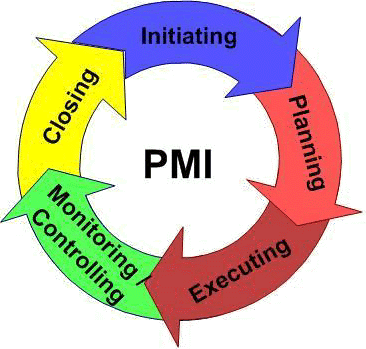
The definition of a Project is:
- A temporary endeavor undertaken to create a unique product, service, or result.
The two most important keywords within that definition are:
- Temporary: A project has a fixed beginning and end. Because of this, there are two factors that come into play in virtually every project: Time (deadlines) and money (budgets). These two factors are also fixed, and the muddier these boundaries are, the more potential there is for conflict among stakeholders.
- Unique: No two projects are the same. Some projects are derived from previous projects (therefore similar) but they are never exactly the same. Even if you had, for example, a project to produce 100 widgets for a customer, and then you are given another project to produce the same 100 widgets for the same customer, these are still two separate projects because they have separate schedules (deadlines).
If you are looking to pass a project management exam, you will need to remember these two words.
Project Life Cycle
The following is the project life cycle.
- Project Initiation. The creation of the project, initial project funding, and authorization of the project manager.
- Project Planning. The creation and approval of the project management plan.
- Project Execution. The production of the deliverables.
- Monitoring & Controlling. Ensuring the project stays within the boundaries of the project management plan.
- Project Closing. Releasing project resources.
They are in chronological order except for #3 (Execution) and #4 (Monitoring & Controlling) which are in parallel. However, the sequence can restart throughout the life cycle of the project as well, for example when a major project phase is complete the project could revert back to the planning stage.
Project Initiation
During this initial phase of the project life cycle, the project is defined, created, and initialized. Funding is determined and the project manager is authorized. The primary output of this phase is called a project charter.
The project charter is created outside of the project. It is used to facilitate communication among the management team and contains the following information:
- Scope statement. Although the final scope statement is determined during the project planning phase, the initiation phase requires a high level scope statement in order to communicate what management is thinking by creating the project.
- Stakeholders. The important stakeholders are present right from the initial conception of the project, therefore they should be identified.
- Funding. Like the scope statement, funding levels must be finalized once the project planning has been completed, but the funding levels can communicate what the management team is thinking when creating the project, hence it can be a strong part of the project charter.
- Project Manager. The project manager is assigned and their authority is given.
Project Planning
 Since most project issues can be tracked back to a lack of planning, this phase should get the necessary attention it deserves. The project manager or management team produces a project management plan, which communicates to all stakeholders what the final destination will be, and how to get there. The project management plan is a living document that is updated as project details change.
Since most project issues can be tracked back to a lack of planning, this phase should get the necessary attention it deserves. The project manager or management team produces a project management plan, which communicates to all stakeholders what the final destination will be, and how to get there. The project management plan is a living document that is updated as project details change.
Parts of a project management plan include:
- Critical Success Factors. What is the definition of project success? Most projects have the budget and schedule as major success criteria, but there are almost always others, like product quality, satisfied stakeholders, or employee career advancement.
- Scope Statement. The official project scope statement is developed within the project management plan. You can’t define every nut or bolt, but the more defined the boundaries of the project are, the better.
- Deliverables. This refers to the items that the project will produce. It can be tangible, like a fence, or knowledge based, like a training course.
- Budget. The overall project budget required to perform the work is defined within the project management plan.
- Schedule. The overall schedule, including milestones, required to perform the work defined in the scope statement.
- Quality. The quality level of the deliverables. There is almost always a trade off between high quality deliverables and cost, and the target location on this spectrum should be well defined.
- Communication. Usually the degree and quality of communication plays a huge role in project success. Therefore, identifying communication requirements during project planning is a smart thing to do.
- Risk. Good project managers know what the major risks to the critical success factors (see above) are, and have a plan so they don’t fly by the seat of their pants when the issues inevitably arise.
- Project Control. Since keeping projects on budget and schedule (as well as the other critical success factors) is so important to successful projects, the project management plan contains details about project control, usually in the form of earned value management.
The project management plan is given approval by the project sponsor (or performing organization). It is also distributed among other stakeholders (as necessary) to communicate the project management team’s intentions.
Project Execution
Upon completion of the project management plan, the project proceeds to the execution phase. In this phase, the deliverables are produced and delivered to the client or customer, often the project sponsor.
During project execution, the quality of the deliverables being produced must be measured via Quality Control measurements. Also, the production system is audited via Quality Assurance.
Also, the project manager must ensure communication is carried out according to the project management plan. Stakeholders are notified of key project activities, and status updates are circulated to investors, financiers, or senior management.
The project team must be acquired and developed to ensure the required knowledge is available to finish the project. Most projects require some form of training or knowledge acquisition that isn’t already available. Additionally, the project team requires motivation and career advancement or they will not be available to finish the project.
Project Monitoring and Control
Project Control refers to the tasks performed by the project manager to ensure the project remains on schedule and budget. This is one of the most difficult aspects of project management and consumes a large part of project management training courses. Project management methodologies use Earned Value Management as the standard to achieve project control.
In earned value management, the management team measures three variables from each project task:
- Planned Value (PV). Where the task is supposed to be according to the schedule.
- Earned Value (EV). The amount of actual work completed on the task.
- Actual Cost (AC). The to-date cost of the task.
This information is used to produce the following metrics, which give you a snapshot of where the project is right now.
- Cost Variance (CV). The amount over or under budget, at the point of analysis (absolute value).
- Cost Performance Index (CPI). The amount over or under budget, relative to the size of the project (relative value). In practice, this is an efficiency factor measured against the schedule.
- Schedule Variance (SV). The amount ahead or behind schedule, at the point of analysis.
- Schedule Performance Index (SPI). The amount ahead or behind schedule, relative to the size of the project. In practice, this is an efficiency factor measured against the project schedule.
Following this analysis, the following four metrics attempt to estimate the future project performance.
- Estimate at Completion (EAC). The final estimated cost of the project assuming the current project performance continues.
- Estimate to Complete (ETC). The amount of money needed to finish the project.
- To Complete Performance Index (TCPI). The Cost Performance Index (CPI) required to finish the project on time and budget, that is, the efficiency level required from the point of analysis forward to the end of the project.
If you would like to learn the calculations please see our article How to Perform the Earned Value Calculations.
Project Closing
The fifth and final project phase is closing the project. This may seem trivial, but most projects have requirements which cannot be overlooked before the project can be closed.
- Contractual closure. The agreements need to be signed and completion certificates issued.
- Procurements. Subcontractors need to have their work accepted and they need to be formally released.
- Final details. Things like as-built drawings, database access, maintenance requirements and training need to be assembled and passed down.
- Liabilities. Warranties and bonds need to be executed. Insurance requirements must be met.
- Release of Resources. The project team, as well as equipment must be released.
- Lessons learned. If there is any information that will help perform future projects, it should be written down and passed on as necessary.
What Is A Project?
That’s what a project looks like! Make sure you keep this definition in mind, as it will ensure your projects go smoothly and meet their objectives.
Good luck and let me know how your project goes.






